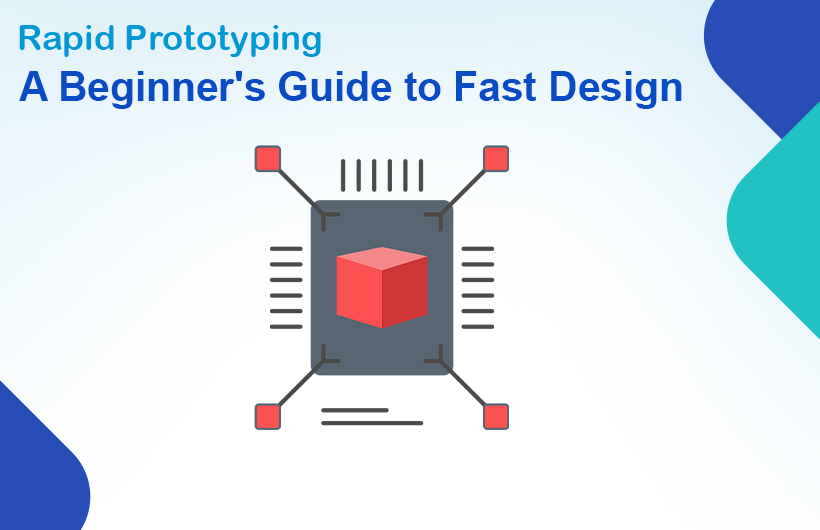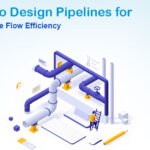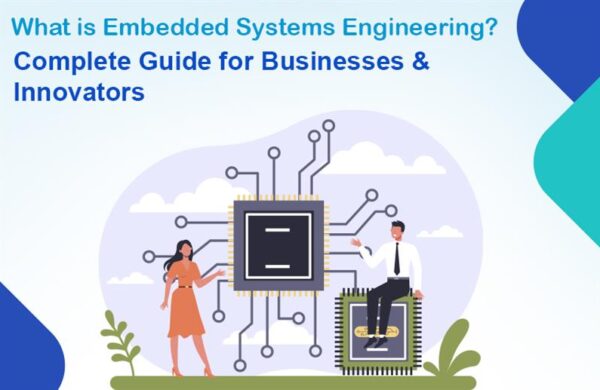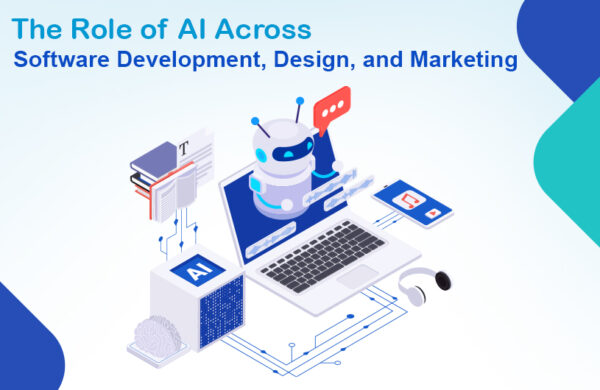In today’s fast-paced world, speed is of the essence, especially when it comes to product development. Whether you’re an entrepreneur looking to launch a groundbreaking product or an engineer working on your next big innovation, rapid prototyping is your secret weapon to bring ideas to life quickly and efficiently.
What Is Rapid Prototyping?
Rapid prototyping is the process of creating the first version or prototype of a product using technology that includes 3D printing, CNC machining, or injection molded prototype of a product, which can be either a scaled-down model or the actual size. These prototypes assist in providing layout, design, and usability, and are easier and quicker to develop than subsequent prototypes. The goal? To drastically minimize the lag time to enhance the small number of design flaws and to enhance the speed at which a product reaches the market.
As opposed to conventional approaches that may take weeks or even months, rapid prototyping incorporates today’s technologies to complete this cycle in one to several days or even hours. Needless to mention, today’s businesses have begun to perceive rapid prototyping services as truly revolutionary in the sphere of product creation.
Why Rapid Prototyping Is Crucial in Modern Development
1. Faster Time-to-Market
When competing against other firms in an industry, there is always a keen emphasis on the speed with which operations are done. Rapid prototyping development means that ideas can be put through the rigorous process of trial and error, and the need to adjust as well as the time to market products can be addressed.
2. Cost-Effective Iterations
In general, constructing a physical model is costly, whereas in rapid prototyping, the expense is relatively small. You can make changes in an instant when everything is digital, updated prototypes can also be printed or created in a wink.
3. Improved Collaboration
Rapid prototyping can be defined as a gap between the design and manufacturing teams. Physical imposition conceives the product before the physical entity and therefore makes the collaboration smoother and productive.
4. Enhanced Testing
Prototypes allow you to test functionality, durability, and usability before committing to mass production. This minimizes the risk of costly post-production errors.
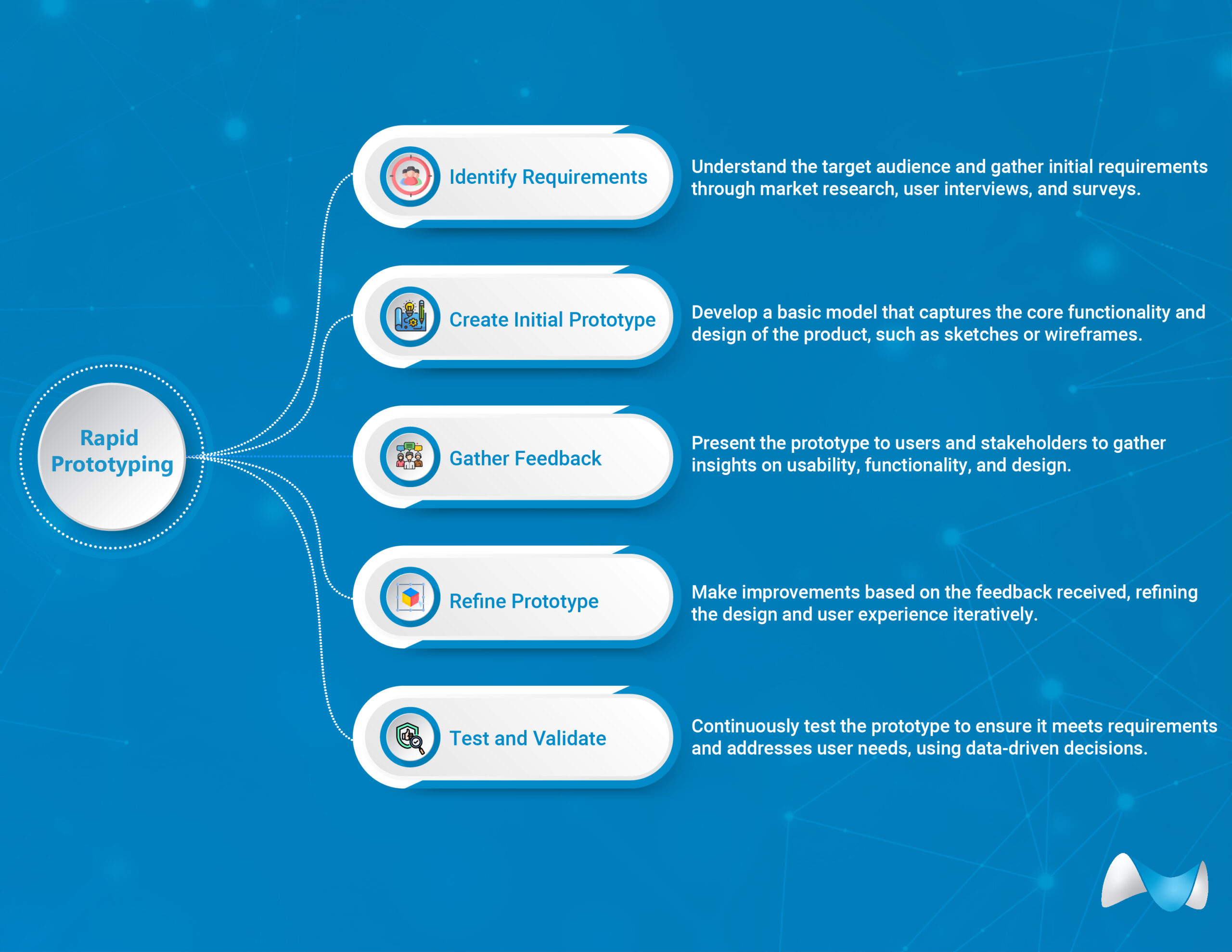
How Rapid Prototyping Works
The rapid prototyping process typically involves three stages:
1. Conceptualization and Design
- Use 3D modeling software to design the product. Popular tools include AutoCAD, SolidWorks, and Fusion 360.
- Focus on the core features and overall structure of the product.
2. Prototype Creation
- Select from among various available rapid prototyping techniques such as 3D printing, CNC machining, or even injection moulding.
- Turn the 3D model into a physically tangible prototype.
3. Testing and Iteration
Still, further, the real-life usefulness and interface of the prototype can be tested in terms of any functional and design issues evident for a smooth running of the product without failure and glitches.
- Depending on the feedback received, the process is continued indefinitely until the final design is produced.
Common Methods In Rapid Prototyping
1. 3D Printing
Rapid prototyping services have numerous choices known today, and 3D printing is among the most used. The method constructs a model from one layer to another by the use of substances such as plastic, resin, or even metal.
- Benefits: Non-expensive; relatively rapid; well adapted to geometries that result from more evolved shapes.
2. CNC Machining
This process of creating a prototype entails using the material, in which subtractions are made directly from a solid block.
- Benefits: Good accuracy and perfect for functional testing.
3. Injection Moulding
Indeed, injection moulding is used to make the mockups using production-like material.
- Benefits: Rigid structures and ideal for carrying out an extensive number of tests.
4. Stereolithography (SLA)
This process involves exposing the liquid resin to a laser to create solid shapes from the resin and provides prototypes with fine surface details.
- Benefits: Decorative and high-precision surface levels.
Possible uses of Rapid Prototyping
1. Product Development
- Most industries such as the automotive industry, aerospace industries, and the consumer electronics industry reap the benefits of rapid prototyping in quick model changes.
2. Architecture and Construction
- To make miniatures of buildings, the architects employ 3D modeling techniques, 3D printing.
3. Medical and Healthcare
- As in prosthetics and surgical instruments, rapid prototyping aids in the development of tailor-made medical equipment.
4. Education and Research
- Teachers and researchers use these tools in universities, research and development institutions.
Why Choose Monarch Innovation for Rapid Prototyping Services?
At Monarch Innovation, we specialize in offering world-class rapid prototyping services tailored to your unique needs. As a leading engineering and designing company, our expertise lies in:
- Delivering high-quality prototypes with precision.
- Utilizing cutting-edge technologies like 3D printing and 3D modeling.
- Reducing your product development cycle with faster turnaround times.
- Ensuring a seamless collaboration process between design and manufacturing teams.
Monarch Innovation makes available and assures the organization, a team with an over-arching understanding of its mandate and responsibility of ensuring the success of your ideas and visions. Our clients can be new brands striving to enter the market, or recognizable brands wishing to expand their product line or experiment: everyone can use the services of a company for the creation of rapid prototypes.
Rapid Prototyping and How it Will Look in the Future
That is, rapid prototyping is already being enhanced as technology advances. Moreover, it is worth emphasizing that advanced technologies boost the level of sophistication presently. Here are some trends to watch out for:
1. AI-Driven Design
- AI is improving 3D modeling and is improving time-to-iteration.
2. Sustainable Prototyping
- Huge attention is paid to the search for ecologically friendly materials to minimize waste during the development of a prototype.
3. Integration with IoT
- Currently, prototypes containing IoT sensors are in the works for producing more faithful emulations.
4. Hybrid Manufacturing
- Integration of multi-compatible RP techniques for higher performance.
Final Thoughts
The days when a company could afford to design a product from scratch and develop a few prototypes before bringing the new product to the market are gone – it simply cannot afford it anymore today. This technology will help businesses not only cut costs and time but also launch new products to the market. To help you with your prototyping development needs, Monarch Innovation is a name you should trust. Our services include modeling from concept to detailed designs, rapid prototyping, and graphic designs all in one place.
So, what are you waiting for? Accelerate your product development journey with Monarch Innovation. Contact us today to learn more and discover how we can turn your ideas into tangible success.
Ready to bring your ideas to life? Monarch Innovation, your trusted rapid prototyping company is just a call away. Partner with us for cutting-edge 3D printing, 3D modeling, and design solutions that redefine innovation. Let’s build the future together!

